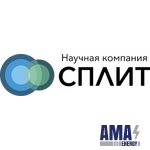Splitmultiseis Technology
SplitMultiSeis is a two-level system; seismoacoustic profiling is performed in the three-frequency range. System structure:
- Near-surface seismic exploration (standard method of MOV OGT).
Acoustic pneumatic source "gun" with the registration of a 96-channel oblique - High-resolution seismic exploration (SVR, eng. High resolution seismic, HR) - the central frequency of the signal is about 200 Hz. - In-depth system . Sparker electrospark source with a 16-32 channel scythe in-line recording - Ultra high resolution seismic exploration (SSVR, eng. Very high resolution seismic, VHR) signal center frequency of about 350-500 Hz.
- Parametric profiler. Ultra-high-resolution seismic exploration (IWRM, eng. Ultra high resolution seismic, UHR) central recording frequencies of 8 kHz and 100 kHz.
The full range of works assumes that at the same time (in one pass of the vessel) five different types of geophysical and hydrographic methods are performed, namely:
- bathymetric survey with a multipath echo sounder ( MBE );
- side-scan sonar ( HLBO );
- continuous seismic-acoustic profiling in the dual-frequency version ( IWRM );
- ultra-high resolution seismic in-depth survey ( SSRR );
- seismic survey of high resolution ( SVR ).
Navigation support for all types of work is also carried out.
The presence of a deepened system allows to obtain data without interference with the satellite wave, which in turn improves the results and the reliability of the dynamic analysis. And obtaining data with different frequency ranges makes possible a comprehensive interpretation and increases the efficiency of mapping objects in a wide range of depths.
SplitMultiSeis Technique

SplitMultiSeis Method Parameters
| Methodology | A source | Receiver | Center frequency |
|---|---|---|---|
| High Resolution Seismic | Pneumatic source | 48-192 channels Channel pitch 3.125-6.26 m Length 150-1500 m | 100-300Hz |
| Ultra-high resolution seismic survey (optionally buried system) | Sparker | 16-24 channels Channel pitch 2-3.135 m Length 30-72 m / td> | 500-1000Hz |
| Ultra High Resolution Seismic | piezoceramic receiving and emitting antenna | 2-16 kHz |
Hardware and software complex SplitMultiSeis

The complex has a number of advantages giving maximum efficiency and economical use of its working time. Meets the requirements of safety and environmental protection. Conforms to modern tasks of marine seismic exploration.
The complex includes:
- Electrospark and pneumatic sources of acoustic signal
- Energy storage up to 5 kJ
- Receiving antennas - analog seismic streamers, 1–24 channels in increments of 1–3.125 m
- The seismic station SplitMultiSeis 64/24 b is used as a data acquisition system.
- Software for data collection and operational quality control of the resulting material
- Hardware Sync Devices
- Devices for descent, lifting and towing equipment
Elements of the complex are unified, it is possible to add sources and seismic stations of the SPLIT company and other manufacturers.

